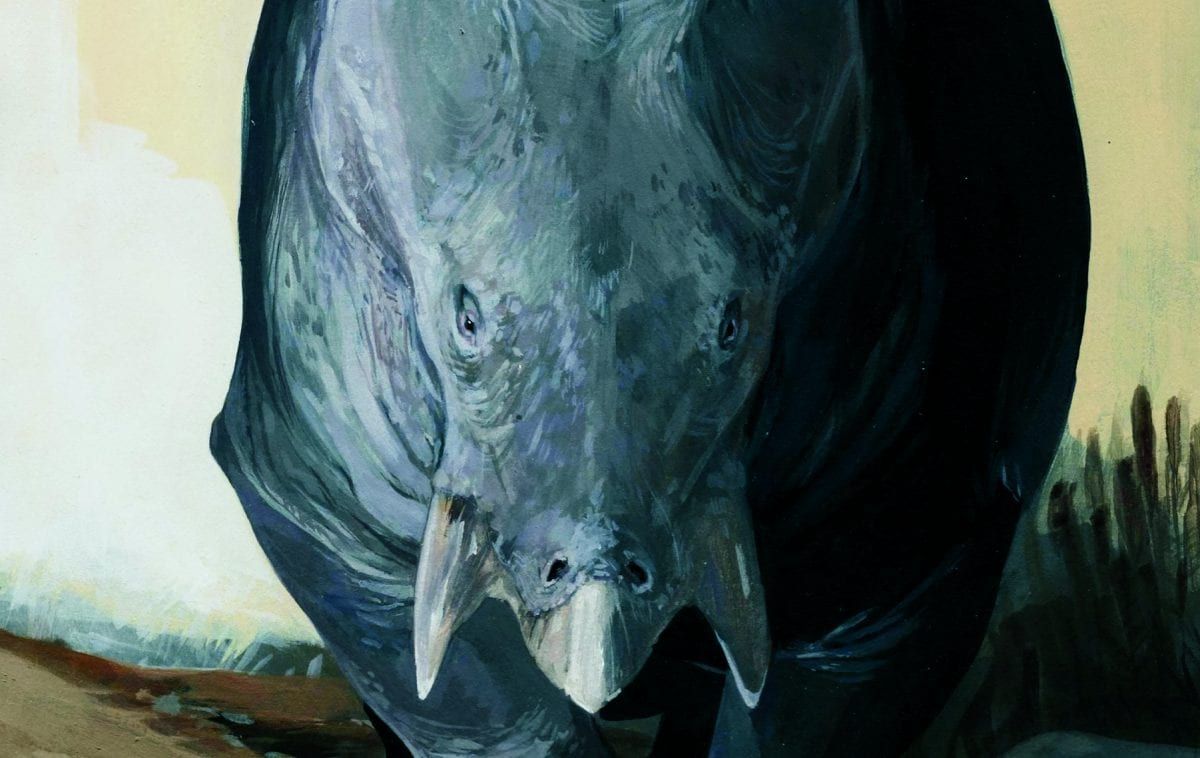
A gigantic beast with huge tusks that was bigger than an elephant once roamed Europe more than 200 million years ago, scientists found.
Belonging to an extinct group of plant eating mammals known as the dicynodonts, it is 40 per cent bigger than any found before.
The remains of the bizarre creatures with turtle-like beaks and big tusks were dug up at a prehistoric graveyard in the remote village of Lisowice, southern Poland, suggested it was possibly one of the last to have lived.
It has mystified palaeontologists for decades and the findings has been hailed a “once in a lifetime discovery.”
The animal could even shed light on how the dinosaurs, that were just beginning to take over the planet, got so massive.
Named, Lisowicia it was about 15 feet long, 9 feet tall and weighed about 9 tons – more than the largest modern African elephant.
Analysis of the limb bones showed revealed they grew quickly, much like a mammal or dinosaur.
It dates back to the Late Triassic, about 210 to 205 million years ago – around 10 million years later than previous findings of dicynodonts.
Dr Tomasz Sulej, of the Polish Academy of Sciences, Warsaw, said: “The discovery of Lisowicia changes our ideas about the latest history of dicynodonts, mammal Triassic relatives.
“It also raises far more questions about what really make them and dinosaurs so large.”
It was a remarkable time in evolution when early dinosaurs, crocodiles, turtles, frogs and lizards were beginning to emerge, as giant pterodactyls soared above.
During this era all land on Earth came together, forming into the massive continent Pangea.
Recently, another type of animal, the therapsids, have become an increasing area of interest
They are the ancestors of today’s mammals, including humans, and included the dicynodonts.
Plant eaters their sizes ranged from small burrowers to large browsers.
They would have used their tusks for digging and fending off predators. Most were also toothless.
They survived the Permian mass extinction and became the dominant terrestrial herbivores in the Middle and Late Triassic.
They were thought to have died out before the dinosaurs became the dominant form of tetrapod on land.
But the new species described in Science alters this.
Co author Dr Grzegorz Niedzwiedzki, of Uppsala University, Sweden, said: “Dicynodonts were amazingly successful animals in the Middle and Late Triassic.
“Lisowicia is the youngest dicynodont and the largest non-dinosaurian terrestrial tetrapod from the Triassic.
“It’s natural to want to know how dicynodonts became so large.
“Lisowicia is hugely exciting because it blows holes in many of our classic ideas of Triassic ‘mammal-like reptiles’.”
Amazing fossils have been turning up Lisowice since 2005.
A treasure trove of more than 1,000 bones and bone fragments have now been collected from the area, including those from Lisowicia.
The area is thought to have been a river deposit during the Late Triassic.
Lisowicia shows mammal-like elephant sized dicynodonts were present at the same time as the long-necked sauropodomorph dinosaurs, contrary to previous belief.
Sauropodomorphs include species like the Diplodocus or Brachiosaurus. It fills a gap in the fossil record of dicynodonts.
Added Dr Sulej: “The discovery of such an important new species is a once in a lifetime discovery.”
Dicynodonts were mostly about the size of a sheep, which makes Lisowicia so fantastic.
They had front legs that sprawled sideways like a lizard’s, but had back legs that were straight and looked more like the legs of a mammal.
They had barrel-shaped bodies and large heads with two small downward pointing tusks and a blunt beak like a tortoise.
We don’t know if they had fur.
The name dicynodont means ‘two dog teeth’ and was given to them because their tusks are like canine teeth.
The dicynodonts are believed to have died out about 210 million years ago in the late Triassic, making Lisowicia among the last.
By Mark Waghorn